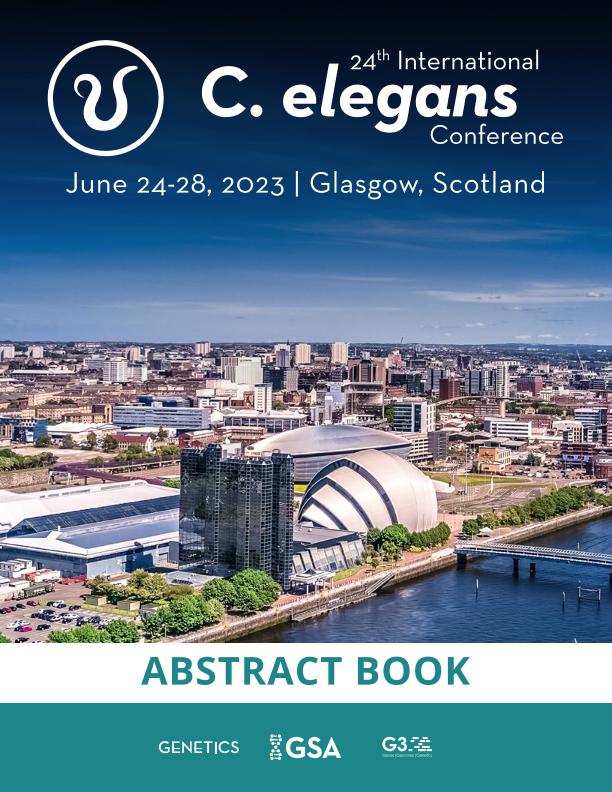Evento
Caenorhabditis elegans betaine-sensitive nicotinic receptors: molecular function and physiological roles.
Turani, Ornella ; Hernando, Guillermina Silvana
; Hernando, Guillermina Silvana ; Rodriguez Araujo, Noelia
; Rodriguez Araujo, Noelia ; Bouzat, Cecilia Beatriz
; Bouzat, Cecilia Beatriz
 ; Hernando, Guillermina Silvana
; Hernando, Guillermina Silvana ; Rodriguez Araujo, Noelia
; Rodriguez Araujo, Noelia ; Bouzat, Cecilia Beatriz
; Bouzat, Cecilia Beatriz
Tipo del evento:
Conferencia
Nombre del evento:
24th International C. elegans Conference
Fecha del evento:
24/06/2023
Institución Organizadora:
Genetics Society of America;
Título del Libro:
24th International C. elegans Conference
Editorial:
Genetics Society of America
Idioma:
Inglés
Clasificación temática:
Resumen
Caenorhabditis elegans possesses an extensive and diverse family of nicotinic receptors (nAChR), many of which remained uncharacterized. nAChRs are involved in worm locomotion and are targets of anthelmintic drugs. Parasitic nematodes have acquired resistance to most anthelmintic drugs, thus generating problems in human and animal health. Because of this, the identification of novel drugs and targets is required. The potent nematocidal drug monepantel (MNP), which belongs to the recently discovered class of compounds amino-acetonitrile derivatives (AADs), has been shown to target ACR-23 nAChR. ACR-23, whose endogenous agonist is betaine (BE), is a poorly characterized nAChR present in body-wall muscle and mechanosensory neurons of nematodes. Since it is not conserved in vertebrates, ACR-23 is an interesting pharmacological target for anthelmintic drugs. Our goal is to decipher ACR-23 molecular function and its potential as a novel anthelmintic drug target. By performing locomotion assays with wild-type adult worms we showed that exogenous BE significantly increased worm motility. This effect was not observed in acr-23 mutants, indicating that the hypermotility is mediated by ACR-23. The exposure of worms to MNP paralysis and inhibited egg hatching, indicating important anthelmintic ability. Locomotion assays with mutant worms demonstrated that MNP-induced paralysis is mediated by ACR-23 and DEG-3/DES-2, a nAChR present in sensory neurons involved in nociception and chemotaxis. By patch-clamp recordings from cultured C. elegans L1 muscle cells, we described for the first time the properties of BE-elicited single-channel and macroscopic currents. Our study provides novel information aiming at the elucidation of the molecular function and pharmacology of the nAChR family. It also contributes to the understanding of the molecular basis of anthelmintic action, which paves the way for the development of novel drugs. produced the opposite effect, resulting in reduced motility as a function of concentration (EC50 = 50 µM). MNP induced spastic
Palabras clave:
CAENORHABDITIS ELEGANS
,
CYS-LOOP RECEPTORS
,
ANTHELMINTICS
Archivos asociados
Licencia
Identificadores
Colecciones
Eventos(INIBIBB)
Eventos de INST.DE INVEST.BIOQUIMICAS BAHIA BLANCA (I)
Eventos de INST.DE INVEST.BIOQUIMICAS BAHIA BLANCA (I)
Citación
Caenorhabditis elegans betaine-sensitive nicotinic receptors: molecular function and physiological roles.; 24th International C. elegans Conference; Glasgow; Escocia; 2023; 377-378
Compartir



